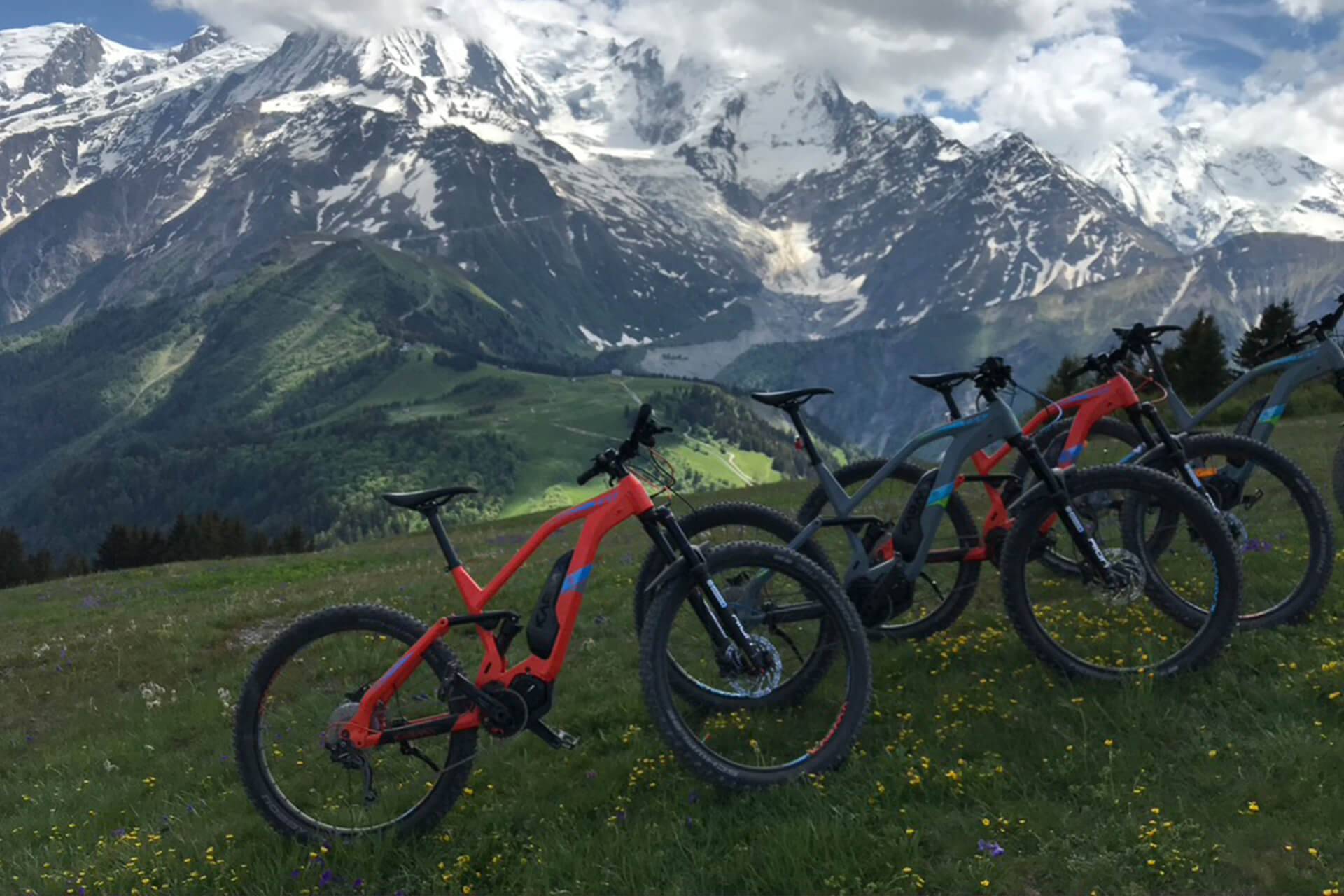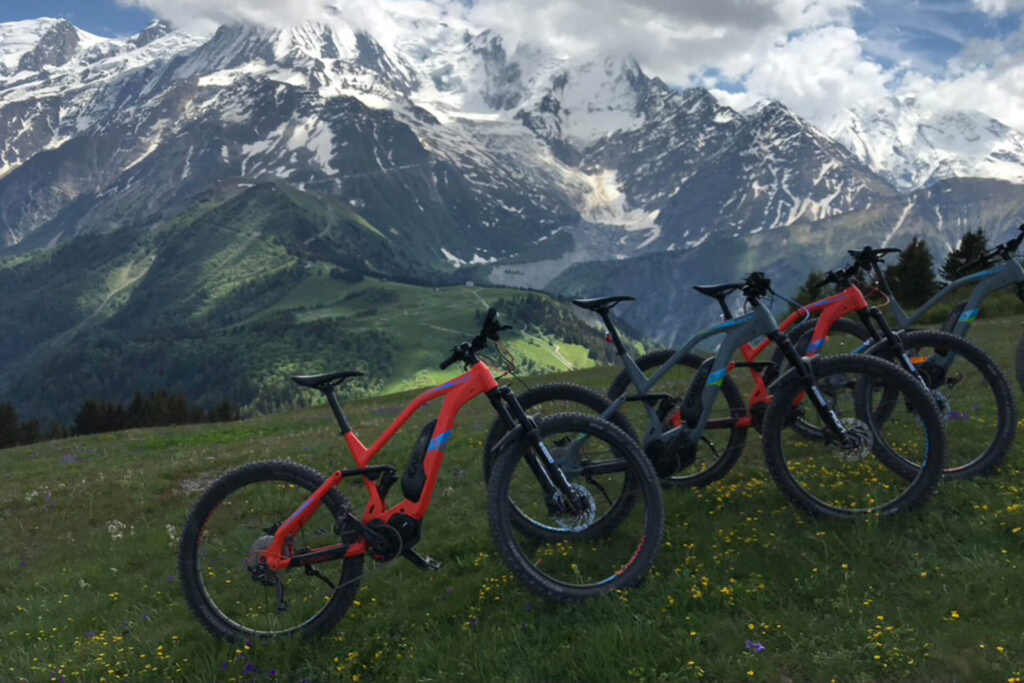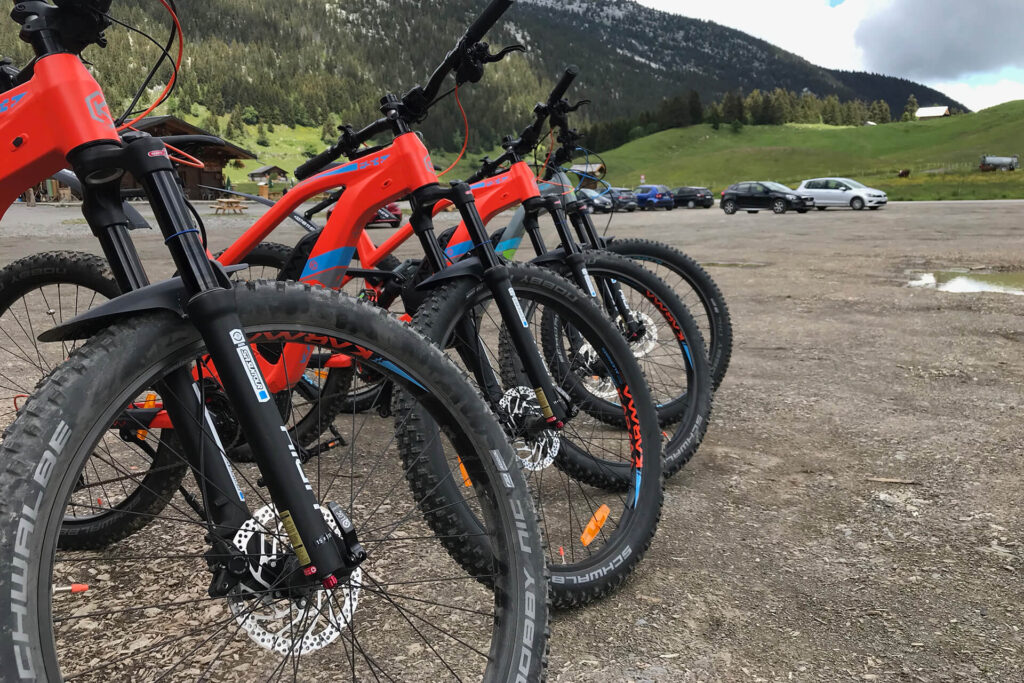As an avid electric mountain bike (eMTB) enthusiast, I’ve faced numerous challenges while riding. However, the journey of refining my riding technique has taught me that eBikes provide optimal performance only when set up and ridden correctly. If not, they can feel heavy and cumbersome. In this article, I’ll share my experience and explain seven […]
4 Common EMTB Riding Mistakes And How To Avoid Them

As an avid electric mountain bike (eMTB) enthusiast, I’ve faced numerous challenges while riding. However, the journey of refining my riding technique has taught me that eBikes provide optimal performance only when set up and ridden correctly.
If not, they can feel heavy and cumbersome. In this article, I’ll share my experience and explain seven common eMTB riding mistakes and how to avoid them.
1. Understanding the Power Modes
Before anything else, understanding the power modes – eco, trail, turbo – is key to harnessing the potential of the eBike. Each of these modes is designed to serve a unique purpose, and strategically utilizing them can dramatically enhance your eBiking experience.
Eco Mode
Think of the eco mode as the “cruise control” of your eBike. Based on my experience, it’s the perfect mode for casual, leisurely rides or those long tours when you need to conserve battery power. In this mode, the eMTB provides the least motor assistance, ensuring maximum battery life.
For instance, imagine you’re riding on a beautiful, flat trail by the beach. You don’t need a lot of power to push you forward, and you’re more focused on the scenery than the speed. This is the perfect scenario to switch your eBike to the eco mode.
You’ll have a smooth ride with just enough assistance to keep you moving forward effortlessly, allowing you to fully soak in the surroundings while saving the battery.
Trail Mode
Next up is the trail mode. After numerous trials and tests, I’ve found that this mode serves as a happy medium, providing a balanced blend of motor assistance and battery conservation.
Consider a scenario where you’re taking an off-road trail with its fair share of ups and downs. You need more power than the eco mode to tackle the rough terrains and small inclines, but you don’t want to drain your battery rapidly either. This is where the trail mode comes into play.
It gives that extra bit of power needed for these moderate challenges, providing a comfortable and enjoyable ride without excessively consuming the battery.
Turbo Mode
Lastly, let’s talk about the turbo mode. This is where your eMTB unleashes its full potential. Our team discovered, through extensive use and testing of various eBikes, that the turbo mode provides maximum motor assistance. It’s your go-to mode for conquering steep climbs or when you need a quick burst of speed.
Let’s imagine you’re faced with a steep, challenging hill. The eco and trail modes won’t provide enough power to climb efficiently. It’s in these moments that you switch to turbo mode. The immediate surge of power makes the uphill task feel like a breeze.
However, remember that such powerful assistance comes at the cost of battery life. Therefore, it’s advised to use this mode sparingly and switch back to trail or eco mode once the challenging terrain is navigated to conserve your battery life.
Understanding these power modes and knowing when to use each one will give you control over your mountain eMTB ride’s efficiency and enjoyment.

2. The Importance of Correct Body Position
An often overlooked but crucial element is the rider’s body position, particularly in relation to seat height and placement. These aspects can significantly influence the quality of your ride, impacting energy expenditure, ride comfort, and even the risk of injury.
Seat Height
Let’s first delve into seat height. Incorrect seat height could lead to wasted energy and even strain on the knees. If the seat is too low, you will find yourself pedaling more rapidly to cover the same distance, leading to quicker fatigue. On the other hand, if the seat is too high, your hips will rock side to side as you pedal, leading to discomfort and inefficient pedaling.
But how do you determine the optimal seat height? As a general rule, when your foot is on the pedal at its lowest point (6 o’clock position), your leg should be almost fully extended, but not locked out. In this situation, your knee should have a slight bend of about 25-30 degrees. This ensures efficient power transfer to the pedals while minimizing the risk of knee strain.
Seat Placement
Next, let’s talk about seat placement, another crucial factor in achieving a comfortable and effective ride.
A well-placed seat should be level to support your full body weight, providing a stable base and allowing easy shifting of weight when needed. To put it into perspective, imagine you’re riding your eBike over a series of bumps. With a level seat, you can effortlessly shift your weight behind the saddle, making it easier to absorb the bumps and maintain control of the bike.
However, if your seat is tilted too far forward, it can put unnecessary pressure on your hands, arms, and lower back as you subconsciously shift weight forward to counterbalance. Conversely, if the seat is tilted backward, you may find yourself constantly trying to prevent sliding off the seat, leading to discomfort and distraction from the joy of your ride.
Understanding and applying these principles of correct body position can greatly enhance your overall eBiking experience, making your rides more enjoyable, efficient, and safe. So, take the time to correctly adjust your seat height and placement before embarking on your next eMTB adventure!
VIP Service: Hire an electric mountain bike and have it delivered to your address.
3. Tire Selection and Maintenance
When it comes to mountain eBiking, choosing the right tires, maintaining appropriate tire pressure, are all integral to averting common tire-related issues and achieving a smoother ride.
Opting for Tubeless Tires
The type of tires you choose can significantly impact your riding experience. After testing various options, I’ve found that tubeless tires provide distinct advantages over their traditional tubed counterparts.
Imagine going for a long, adventurous ride on your mountain eBike. The route is rocky and filled with sharp objects that could easily cause a flat tire.
With tubeless tires, you can tackle this trail with much more confidence. They’re less prone to punctures as there’s no inner tube to get punctured. Even if a sharp object does penetrate the tire, the sealant inside a tubeless setup quickly plugs the hole, allowing you to continue your ride with minimal interruption.
Additionally, tubeless tires are generally lighter in weight, as they eliminate the need for an inner tube. This can enhance your bike’s agility, making it easier to handle. It also helps with “bump compliance” or the tire’s ability to conform to irregularities in the terrain. This means that when you’re riding over rough terrain or bump-ridden trails, tubeless tires can provide a smoother and more comfortable ride.

Maintaining Proper Tire Pressure
Keeping your tires at the correct pressure is also paramount for optimal eBike performance. For example, imagine you’re riding your eMTB on a trail with loose gravel. If your tire pressure is too high, your tires may not grip the surface effectively, leading to a loss of control. Conversely, if the pressure is too low, your bike might feel sluggish, and you run the risk of “pinch flats” or rim damage when encountering obstacles.
The perfect pressure depends on several factors, including the type of tire, the weight of the rider, and the terrain. It’s always a good practice to check your tire pressure before each ride and adjust it as necessary to ensure optimal traction, control, and efficiency.
In conclusion, giving due consideration to these aspects of tire selection and maintenance can significantly enhance your eBiking experience, ensuring safer, smoother, and more enjoyable rides.
4. Mastering Effective Braking Techniques on eMTB
Navigating an eBike isn’t just about powering forward – it also involves knowing how to slow down and stop effectively and safely. The art of braking might seem simple at first glance, but it requires a nuanced understanding and conscious technique to execute correctly.
Balancing Front and Rear Brakes
The first step towards effective braking on an eBike is understanding the role of both the front and rear brakes and how they should be used in unison. Utilizing both brakes simultaneously allows for a smoother, quicker stop and grants better control during downhill descents.
Picture yourself speeding down a steep hill on your eBike. The thrill is exhilarating, but suddenly you spot an obstacle in your path and need to stop quickly. If you were to apply only the rear brake, your stopping distance would be prolonged, potentially leading to a collision. However, by engaging both the front and rear brakes, you significantly reduce your stopping distance, ensuring a safe and controlled halt.
Front Brake: The Main Power Source
Following extensive experiments with various braking techniques, we’ve found that the front brake should bear the brunt of the braking force – approximately 70% of it.
The rationale behind this is related to physics. When you brake, the weight of the bike and rider transfers forward, adding more downward force to the front wheel and thus increasing its grip on the ground. This is why the front brake has more stopping power and can halt the bike quicker.
Consider a situation where you’re riding at a high speed and suddenly encounter a sharp turn. By applying more pressure to the front brake (being mindful not to ‘grab’ the brake abruptly), you can decelerate rapidly and safely navigate the turn.
A Word of Caution
Despite the front brake’s greater stopping power, it’s important to use it with care. Grabbing the front brake too abruptly can result in “endo” or “over the bars,” where the back of the bike lifts off the ground and the rider is thrown forwards.
Hence, while braking, it’s crucial to start by applying the rear brake slightly before the front one, and then gradually increase the pressure on the front brake, maintaining a balance between the two.
In summary, effective braking on eBikes involves using both the front and rear brakes harmoniously, with a bias towards the front brake. It’s a skill that not only contributes to a smoother ride but also greatly enhances your safety while eBiking. By mastering this technique, you can tackle any trail or terrain with confidence, knowing you have full control over your speed and stopping power.
4 Common EMTB Riding Mistakes And How To Avoid Them – Conclusion
So, there you have it! The seven common eMTB riding mistakes and how to avoid them. eBiking is an excellent sport and leisure activity, but it requires proper understanding and technique for the best experience. Keep these points in mind, and you’ll surely get the most out of your rides!
EMTB Riding Mistakes And How To Avoid Them – FAQ
1. What is the optimal tire pressure for eMTB?
The optimal tire pressure depends on several factors such as rider weight, tire size, and riding conditions. Usually, it’s between 20 to 35 PSI.
2. Can I use the turbo mode all the time on my eBike?
While you can technically use turbo mode all the time, it’s not recommended as it drains the battery faster and may wear out the motor more quickly.
3. How often should I check the suspension on my electric mountain bike?
Regular riders should check their suspension weekly. It’s also wise to have a professional suspension service annually.
4. What is the proper seat height for eMTB riding?
When your foot is on the pedal at its lowest point, your leg should be almost fully extended.
5. What’s the best way to brake on an electric mountain bike?
Modulating the front and rear brakes together offers more control and reduces stopping distance.